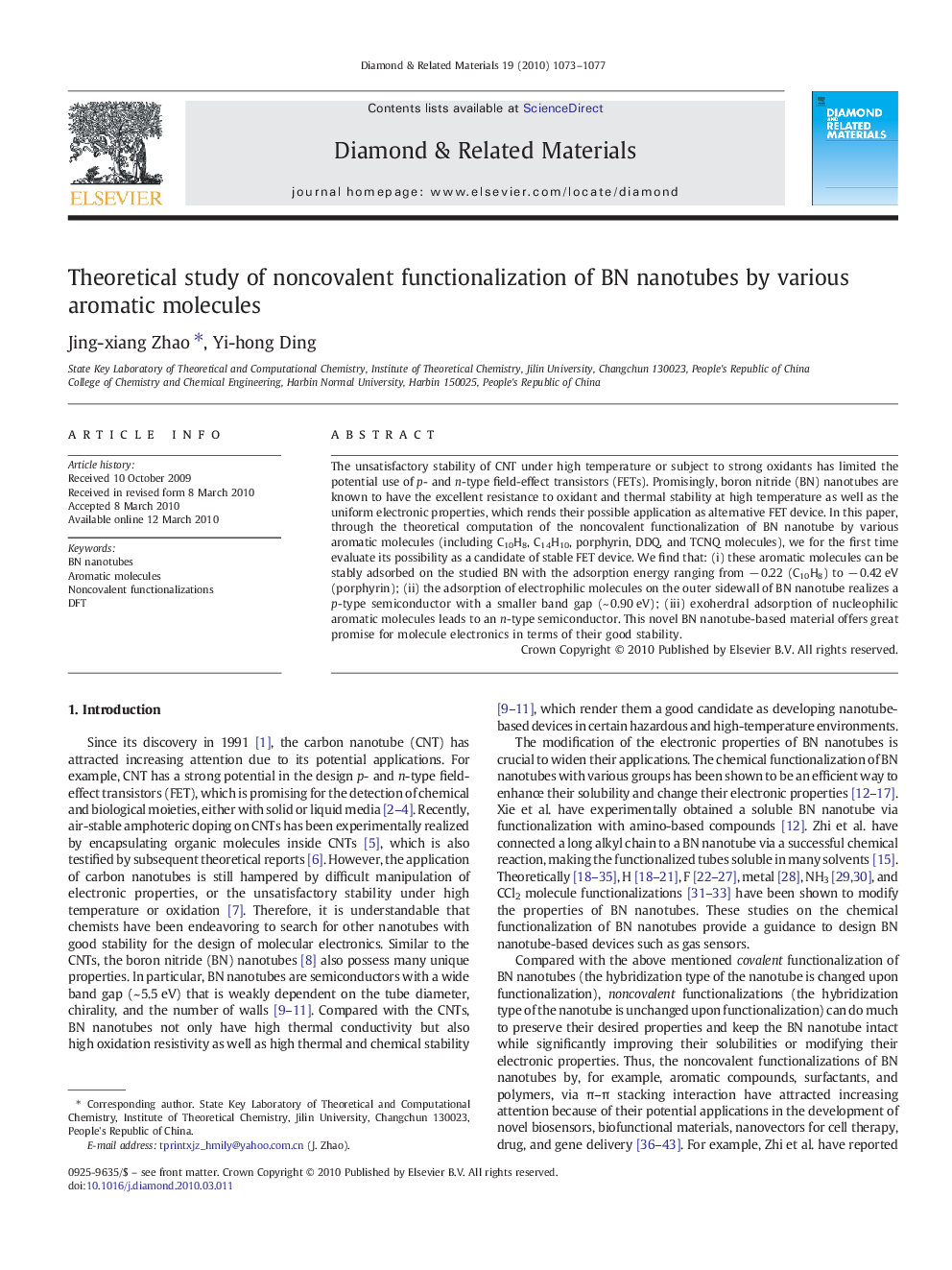| Article ID | Journal | Published Year | Pages | File Type |
|---|---|---|---|---|
| 702725 | Diamond and Related Materials | 2010 | 5 Pages |
The unsatisfactory stability of CNT under high temperature or subject to strong oxidants has limited the potential use of p- and n-type field-effect transistors (FETs). Promisingly, boron nitride (BN) nanotubes are known to have the excellent resistance to oxidant and thermal stability at high temperature as well as the uniform electronic properties, which rends their possible application as alternative FET device. In this paper, through the theoretical computation of the noncovalent functionalization of BN nanotube by various aromatic molecules (including C10H8, C14H10, porphyrin, DDQ, and TCNQ molecules), we for the first time evaluate its possibility as a candidate of stable FET device. We find that: (i) these aromatic molecules can be stably adsorbed on the studied BN with the adsorption energy ranging from − 0.22 (C10H8) to − 0.42 eV (porphyrin); (ii) the adsorption of electrophilic molecules on the outer sidewall of BN nanotube realizes a p-type semiconductor with a smaller band gap (~ 0.90 eV); (iii) exoherdral adsorption of nucleophilic aromatic molecules leads to an n-type semiconductor. This novel BN nanotube-based material offers great promise for molecule electronics in terms of their good stability.
